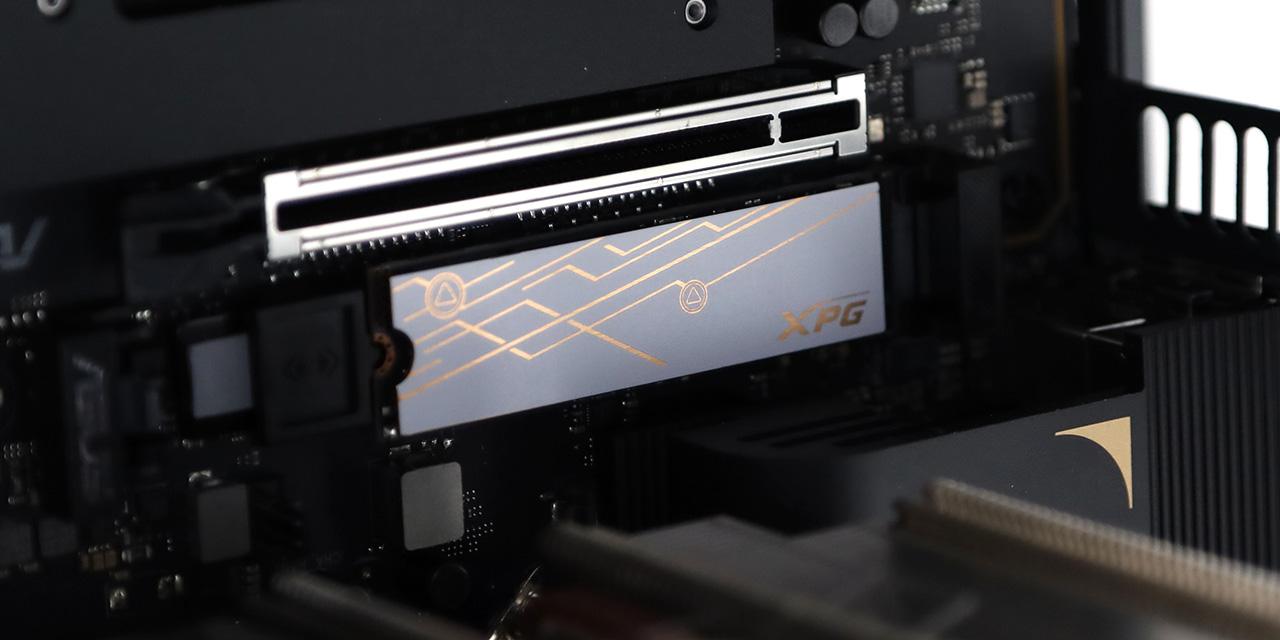Page 2 - A Closer Look, Test System
As always, with our storage reviews, before we move on to the benchmark results, let us briefly discuss the physical attributes of this hard disk drive first. The Red WD80EFZX is your quintessential 3.5" hard drive from Western Digital; all you have at the top is bare metal with a dull silver finish, and a large label placed across the middle. It weighs in at 1.43lbs each, making it lighter than both the 4TB and 6TB model. As a differentiating element between product lines, the top and bottom of the sticker is printed red in color, because, well, it is part of the Red series designed for network attached storage systems. The label also says "WD Red" at the bottom, just so you can tell this is not a Red Pro. On the label, you will also spot information like its 8TB drive capacity, SATA interface with 128MB cache, WD80EFZX model code, NASware 3.0 firmware, manufacturing date on September 10, 2016 for our particular unit, and that it is a product of Thailand. A QR code is prominently displayed as well. Once scanned, it will bring up Western Digital's product page for you to learn more about this particular hard drive. The Western Digital Red comes with a three year limited warranty, compared to five years for Pro model.
Turning the Western Digital Red WD80EFZX 8TB around, and you will see a green printed circuit board that interfaces between its SATA 6Gb/s interface and the physical mechanical components. Mechanically, the Western Digital Red WD80EFZX 8TB is a 7,200RPM drive with seven high density platters inside. While Western Digital advertises this drive as a "5,400RPM class" drive, this is misleading, because the spindle does indeed spin at 7,200RPM according to our measurements. The drive is helium filled for reduced resistance, which means more platters can be stacked in the same amount of space, along with reduced power consumption. With these high density platters using traditional perpendicular magnetic recording technology, as opposed to performance-penalizing technologies like shingled magnetic recording, this should translate to great performance in our benchmarks. You will see 7.27TB in Windows. The rated power consumption is 6.4W under load, 5.2W idling, and 0.7W standby, which is pretty good. The load power is a little better than the Seagate IronWolf ST10000VN0004 10TB, but the WD Red 8TB consumes more power idling.
As far as electronic components are concerned, the Western Digital Red WD80EFZX 8TB features a LSI 7101B drive controller. The motor is controlled by a SMOOTH L7229 chip. A Nanya NT5CB64M16FP-DH DDR3-1600 128MB IC acts as the cache for the drive.
But before we delve into the benchmarking, I would like to spend a little bit of time discussing the unique characteristics of the Western Digital Red WD80EFZX 8TB NAS drive. What makes a NAS drive, a NAS drive? From a hardware perspective, usually, it will feature lower consumption. Since file servers are designed to be turned on 24/7, reduced power consumption can make a significant difference on your power bill, especially if you have many drives. Reliability enhancements are also made with what Western Digital calls the "3D Active Balance Plus", which refers to the disk being physically balanced properly to reduce excessive vibration and noise in a multi-drive configuration, such as your network attached storage system. Some network attached storage oriented models recommends no more than five drives per system, but the WD80EFZX will play nice even if you have up to eight drives running concurrently. If you have a bigger NAS, you will need to go with a WD Red Pro, because the WD Red series does not have a multi-axis shock sensor enabled for measuring subtle shock events and compensating head position automatically. The Western Digital Red WD80EFZX 8TB is also rated as having 1,000,000 hours MTBF.
As with all NAS drives, the Western Digital Red is TLER enabled. If a drive is not TLER enabled, it may be dropped out of a RAID array unexpectedly down the road. TLER stands for 'Time Limited Error Recovery', which is Western Digital's name for a feature that limits a hard drive's error recovery time to seven seconds (Seagate calls it ERC; Hitachi calls it CCTL). According to Western Digital, desktop hard drives may enter deep recovery mode, and could take up to two minutes to deal with a bad sector. During this time, the hard drive will not respond. Because of this, RAID controllers may mark the drive as unreliable, because it has failed to respond within a set period of time.
For small NAS environments, most people probably will not need hardcore enterprise grade drives, which are usually quite expensive. TLER and related RAID array configuration problems are more crucial with demanding business environments than a home or SOHO NAS setup with just two or three drives. Linux software RAID that your network attached storage system implements is much more lenient with consumer desktop drives. Personally, I have run RAID 5 arrays in my QNAP systems from 2010 to 2014 using regular disks with absolutely no problems at all. However, drives like the Western Digital Red WD80EFZX are specifically tested for compatibility, designed for reliability in this operating environment, and comes TLER enabled from the factory to ensure you will not experience related issues down the road. With a price comparable to desktop drives, the Western Digital Red series is simply a no-brainer if you are looking to fill up your file server.
Our test configuration is as follows:
CPU: Intel Core i7-4790K @ 4.6GHz
CPU Cooling: Noctua NH-D15S
Motherboard: Gigabyte GA-Z97X-UD3H-BK
RAM: Patriot Viper 3 Low Profile PC3-17000 4x8GB
Graphics: Gigabyte G1 Gaming GeForce GTX 960 4GB
Chassis: Fractal Design Define R5
Storage: OCZ Vector 180 240GB; Crucial MX200 500GB
Power: PC Power & Cooling Silencer Mk III 1200W
Sound: Auzentech X-Fi Bravura
Optical Drive: LiteOn iHAS224-06 24X DVD Writer
Operating System: Microsoft Windows 10 Pro
Compared Hardware:
- Western Digital Red WD80EFZX 8TB (Hard Drive)
- HGST Deskstar NAS 4TB (Hard Drive)
- Seagate BarraCuda Pro ST10000DM0004 10TB (Hard Drive)
- Seagate Desktop SSHD ST4000DX001 4TB (Hybrid Hard Drive)
- Seagate Enterprise Capacity 3.5 HDD V.5 ST8000NM0055 8TB (Hard Drive)
- Seagate IronWolf ST10000VN0004 10TB (Hard Drive)
- Seagate Laptop SSHD ST500LM000 500GB (Hybrid Hard Drive)
- Seagate NAS HDD ST4000VN000 4TB (Hard Drive)
- Seagate NAS HDD ST8000VN0002 8TB (Hard Drive)
- Western Digital Black WD6001FZWX 6TB (Hard Drive)
- Western Digital Blue SSHD WD40E31X 4TB (Hybrid Hard Drive)
- Western Digital Red WD40EFRX 4TB (Hard Drive)
- Western Digital Red WD60EFRX 6TB (Hard Drive)
- Western Digital Red Pro WD4001FFSX 4TB (Hard Drive)
- Western Digital Red Pro WD6001FFWX 6TB (Hard Drive)
Page Index
1. Introduction, Packaging, Specifications
2. A Closer Look, Test System
3. Benchmark: AIDA64 Disk Benchmark
4. Benchmark: ATTO Disk Benchmark
5. Benchmark: Crystal Disk Mark 3.0
6. Benchmark: HD Tach 3.0.1.0
7. Benchmark: HD Tune Pro 4.60
8. Benchmark: PassMark PerformanceTest 8.0
9. Benchmark: PCMark 7
10. NAS Performance, Power Consumption
11. Conclusion





